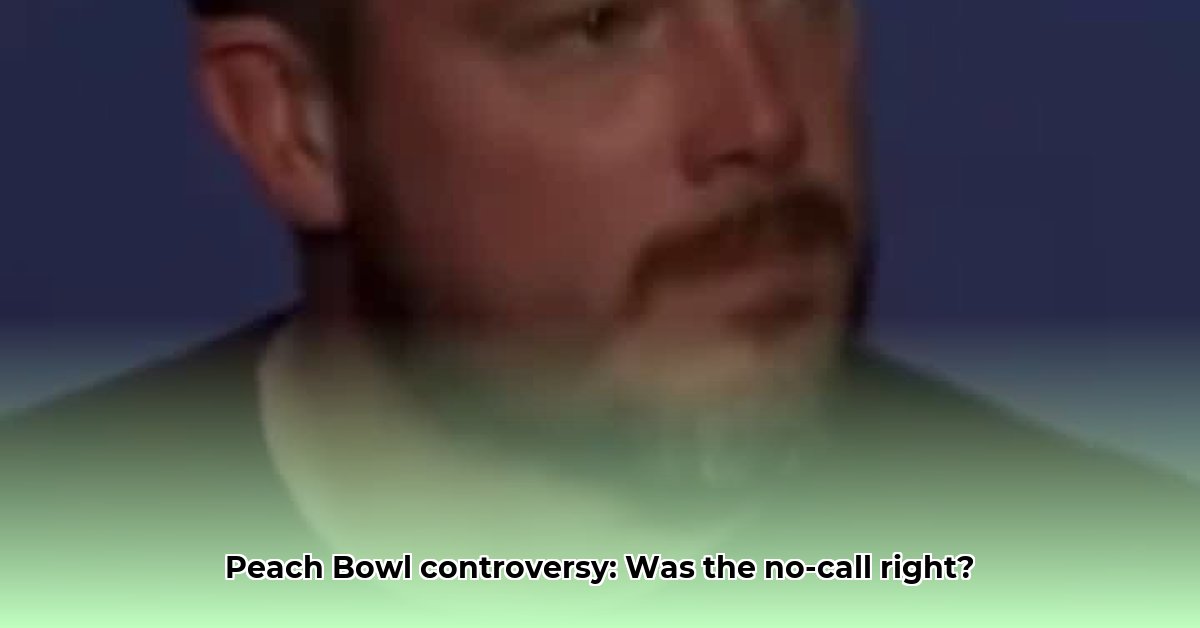The thrilling double-overtime victory of the Texas Longhorns over the Arizona State Sun Devils in the 2025 Peach Bowl was quickly overshadowed by a controversial no-call on a potential targeting foul. With the score tied 24-24 and just over a minute remaining in regulation, Texas defensive back Michael Taaffe delivered a jarring hit on Arizona State receiver Melquan Stovall. The impact, which appeared to involve helmet-to-helmet contact, sparked immediate outrage among Arizona State fans and coaches, as no penalty flag was thrown. The no-call arguably altered the course of the game, leading to a 39-31 Texas victory in double overtime, and igniting a firestorm of debate within the college football community.
The Hit Heard ‘Round the College Football World
The play in question unfolded with the game hanging in the balance. Stovall, having just secured a crucial first down reception, was immediately met by Taaffe. Replays show Taaffe launching himself toward Stovall, with the point of contact appearing to be helmet-to-helmet, or at the very least, helmet-to-neck/shoulder area. While the force of the impact was evident, Stovall eventually rose to his feet, albeit likely shaken. ESPN rules analyst Matt Austin, commenting live during the broadcast, expressed his strong belief that the hit constituted targeting, an infraction that mandates immediate ejection. The referees, however, saw it differently. After a review, the officials upheld the no-call, leaving Arizona State to punt the ball away.
Decoding the Targeting Rule
The targeting rule in college football is intended to protect players from potentially catastrophic head and neck injuries. The rule prohibits forcible contact to the head or neck area of a defenseless opponent, regardless of the tackler’s intent. Contact can be made with the helmet, forearm, hand, fist, elbow, or shoulder. The rule hinges on several key factors:
- Forceful Contact: The hit must be more than incidental contact.
- Head or Neck Area: The contact must be to the head or neck area.
- Defenseless Player: The receiver must be considered defenseless.
While these guidelines exist, applying them in real-time, at full speed, presents a significant challenge for officials. This difficulty is further compounded by the often ambiguous nature of helmet-to-helmet contact, where slight variations in angles and player movements can dramatically influence the outcome. This Peach Bowl incident highlights the inherent challenges in consistently and accurately applying the targeting rule.
The Fallout: Yormark’s Fury and Calls for Reform
The aftermath of the no-call was explosive. Arizona State head coach Kenny Dillingham, visibly frustrated in his post-game press conference, stated, “I don’t know what targeting is,” encapsulating the confusion surrounding the rule’s application. Big 12 Commissioner Brett Yormark, perhaps sensing an opportunity to advocate for his conference and highlight ongoing concerns about officiating consistency, went further, publicly lambasting the officiating and demanding a comprehensive review of CFP officiating practices. Yormark called for the institution of a national standard for targeting calls, advocating for greater consistency and transparency in the application of the rule. He argued that the current system, where officiating standards may vary across conferences, creates an uneven playing field, especially in high-stakes playoff games.
The Future of Targeting and CFP Officiating
The Peach Bowl controversy has sparked crucial conversations about the future of officiating in college football. Several potential solutions have emerged:
- Centralized Officiating: A centralized officiating department could ensure greater consistency in training, evaluation, and assignment of officials across all conferences.
- Enhanced Replay Review: Expanding the use of replay review and potentially incorporating a dedicated targeting expert in the booth, akin to the NFL’s system for pass interference, could allow for more informed decisions.
- Rule Clarification: Revisiting and refining the language of the targeting rule, perhaps providing clearer examples of what constitutes a foul, could reduce ambiguity and aid officials in making more consistent calls.
- Graded Penalties: Some argue that a tiered penalty system for targeting, distinguishing between flagrant fouls and incidental contact, would offer more flexibility and prevent overly harsh punishments for unintentional infractions.
This incident extends beyond a single missed call. It underscores the urgent need for greater transparency, consistency, and accountability in college football officiating. The Peach Bowl targeting controversy serves as a stark reminder of the profound impact officiating can have on the outcome of games, the careers of players, and the integrity of the sport itself. Whether this controversy will be the catalyst for meaningful change remains to be seen. However, the pressure for reform is undeniable, and the conversation is unlikely to fade away anytime soon.







